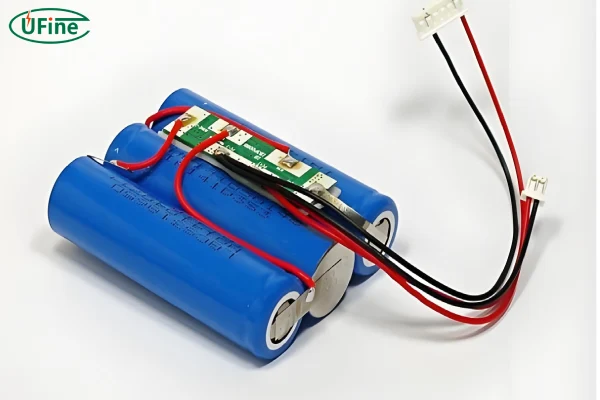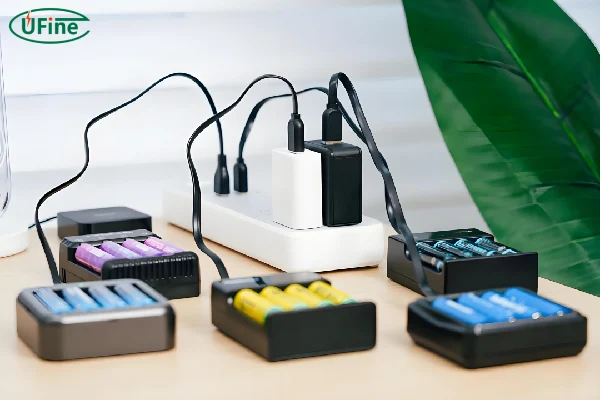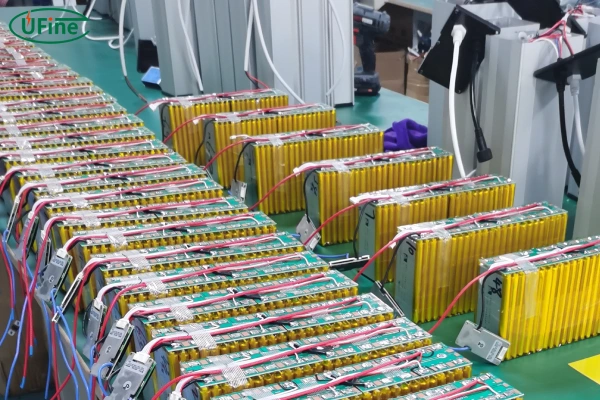
- Part 1. What is a 3S LiPo battery?
- Part 2. 3S LiPo batteries chemistry
- Part 3. Key parameters
- Part 4. What voltage to charge a 3S LiPo battery?
- Part 5. Capacity and applications
- Part 6. Discharge rating ("C" rating)
- Part 7. Internal resistance
- Part 8. Chargers and charging cables
- Part 9. Charging and discharging safety tips
- Part 10. How to save your 3S LiPo battery?
3S LiPo batteries are a popular choice for powering a wide range of devices, from RC cars and drones to power tools and even electric bicycles. But knowing how to charge these batteries safely and effectively is crucial for their performance and longevity. This guide will walk you through everything you need to know about 3S LiPo batteries, from understanding their basics to mastering the art of charging.
Part 1. What is a 3S LiPo battery?
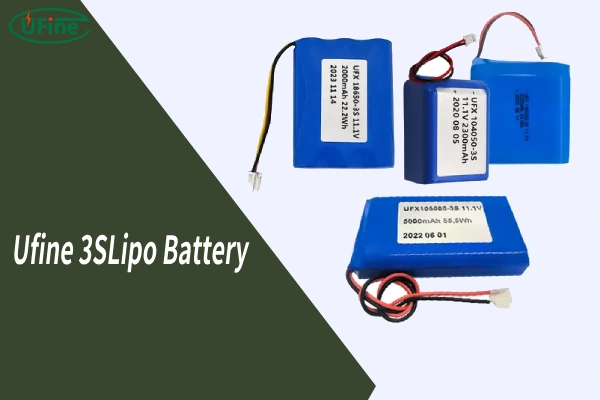
A 3S LiPo battery is a type of lithium polymer battery that consists of three cells connected in series. “3S” refers to the number of cells in series, and “LiPo” stands for lithium polymer. Each cell in a 3S LiPo battery has a nominal voltage of 3.7 volts, so a fully charged 3S LiPo battery has a nominal voltage of 11.1 volts (3.7 volts x 3 cells).
Part 2. 3S LiPo batteries chemistry
3S LiPo batteries are made of lithium-ion compounds, which are embedded within a polymer matrix. This unique structure allows for high energy density and a lightweight design. During charging, lithium ions move from the cathode (positive electrode) to the anode (negative electrode). During discharge, the process reverses, releasing energy as electrical current.
Part 3. Key parameters
To understand 3S LiPo batteries better, let’s explore some key parameters:
- Voltage: As mentioned earlier, a 3S LiPo battery has a nominal voltage of 11.1 volts. This is the average voltage when the battery is partially charged.
- Capacity: The capacity of a 3S LiPo battery is measured in milliampere-hours (mAh). It indicates how much energy the battery can store. Common capacities for 3S LiPo batteries range from 500mAh to 5000mAh or more, depending on the application.
- Discharge Rating (“C” Rating): The discharge rating, often referred to as the “C” rating, indicates how quickly the battery can safely discharge. A higher “C” rating means the battery can deliver more current in a shorter time. For example, a 10C battery can deliver 10 times its capacity in current (e.g., a 1000mAh battery with a 10C rating can deliver 10 amps).
- Internal Resistance: Internal resistance is a measure of how much the battery resists the flow of current. Lower internal resistance is generally better, as it allows for more efficient energy transfer and less heat generation.
- Charging Voltage: The charging voltage for a 3S LiPo battery is typically around 12.6 volts. This is slightly higher than the nominal voltage to ensure that the cells are fully charged.
- Discharging Voltage: The discharging voltage for a 3S LiPo battery is typically around 9.6 volts. This is the lowest voltage at which the battery should be discharged to prevent damage.
- Cut-off Voltage: The cut-off voltage is the lowest voltage that the battery should be allowed to reach during discharge. This voltage is typically set by the charger or the device using the battery. For 3S LiPo batteries, the cut-off voltage is usually around 9.0 volts to 9.6 volts.
Part 4. What voltage to charge a 3S LiPo battery?
To charge a 3S LiPo battery safely and effectively, you need to use a charger specifically designed for LiPo batteries. These chargers typically have a charging voltage of around 12.6 volts, which is slightly higher than the nominal voltage of 11.1 volts. This ensures that the cells are fully charged and prevents overcharging, which can damage the battery.
Here’s a breakdown of the key voltages involved in charging and discharging 3S LiPo batteries:
- Charging Voltage: 12.6 volts (typically)
- Discharging Voltage: 9.6 volts (typically)
- Nominal Voltage: 11.1 volts
- Cut-off Voltage: 9.0 volts to 9.6 volts (depending on the charger or device)
Part 5. Capacity and applications
The capacity of a 3S LiPo battery determines how long it can power a device before needing to be recharged. Common capacities for 3S LiPo batteries range from 500mAh to 5000mAh or more. The specific capacity you need will depend on the application. Here are some examples:
- 500mAh to 1000mAh: These smaller capacities are often used in small RC models, drones, and other lightweight devices.
- 1500mAh to 2200mAh: These capacities are suitable for larger RC models, drones, and some power tools.
- 3000mAh to 5000mAh: These higher capacities are used in larger RC models, electric bicycles, and other high-power applications.
Part 6. Discharge rating (“C” rating)
The discharge rating, or “C” rating, of a 3S LiPo battery indicates how quickly it can safely discharge. A higher “C” rating means the battery can deliver more current in a shorter time. For example, a 10C battery can deliver 10 times its capacity in current (e.g., a 1000mAh battery with a 10C rating can deliver 10 amps). The “C” rating is important for applications that require high power output, such as RC cars, drones, and electric bicycles.
Part 7. Internal resistance
Internal resistance is a measure of how much the battery resists the flow of current. Lower internal resistance is generally better, as it allows for more efficient energy transfer and less heat generation. Internal resistance can vary depending on the battery’s age, temperature, and state of charge. Lower internal resistance is generally desirable for applications that require high power output.
Part 8. Chargers and charging cables
To charge a 3S LiPo battery safely and effectively, you need a charger specifically designed for LiPo batteries. These chargers typically have a charging voltage of around 12.6 volts, which is slightly higher than the nominal voltage of 11.1 volts. They also feature features like balancing, which ensures that all cells in the battery are charged evenly.
There are different types of LiPo chargers, including:
- Balance Chargers: These chargers are the most common type and offer the best protection for your LiPo batteries. They monitor the voltage of each cell individually and balance them to ensure they are all charged evenly.
- Fast Chargers: These chargers can charge LiPo batteries quickly, but they may generate more heat and put more stress on the battery. They are not recommended for all applications.
- USB Chargers: These chargers are convenient for charging LiPo batteries on the go, but they may not have the same features as dedicated LiPo chargers.
Part 9. Charging and discharging safety tips
LiPo batteries are powerful and can be dangerous if not handled properly. Here are some safety tips to keep in mind:
- Always use a LiPo charger specifically designed for LiPo batteries.
- Never charge LiPo batteries unattended.
- Charge LiPo batteries in a well-ventilated area.
- Never overcharge or over-discharge LiPo batteries.
- Store LiPo batteries in a cool, dry place.
- Do not expose LiPo batteries to extreme temperatures.
- Do not puncture or damage LiPo batteries.
- Dispose of damaged or worn-out LiPo batteries properly.
Part 10. How to save your 3S LiPo battery?
To extend the life of your 3S LiPo battery, follow these tips:
- Avoid overcharging and over-discharging.
- Store the battery at a moderate temperature.
- Don’t leave the battery connected to the charger for extended periods.
- Use a balance charger to ensure even charging.
- Avoid using the battery in extreme conditions.
By understanding the basics of 3S LiPo batteries, their charging and discharging characteristics, and the importance of safety, you can ensure the optimal performance and longevity of your batteries. Always use a dedicated LiPo charger, follow safety guidelines, and store your batteries properly. With the right knowledge and care, your 3S LiPo batteries will continue to power your devices reliably for years to come.
Related Tags:
More Articles
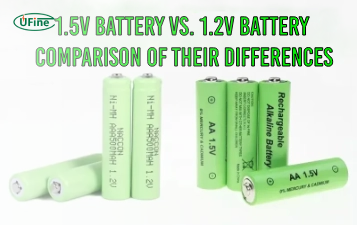
1.5V Battery Vs. 1.2V Battery: Comparison of Their Differences
Compare 1.2V vs 1.5V batteries: voltage, usage, rechargeability. Best for remotes, toys, cameras. Discover which AA battery suits your device.
Recommended 10 Best Batteries For Smoke Detectors
Discover the best batteries for smoke detectors in 2025. Compare top 10 9V and AA options for long-lasting, leak-proof, and reliable smoke alarm power.
Triple A Battery Voltage: Everything You Need to Know
Learn how many volts are in a triple A battery (1.5V vs 1.2V), see AAA battery voltage chart, and compare chemistry, testing, and lifespan for 2025 devices.
9V vs AA Batteries for Fire Alarm: Which One Should You Use?
Compare 9V and AA batteries for smoke detectors. Learn which type provides better lifespan, voltage, and cost efficiency to keep your fire alarms reliable.
Flashlight Battery Size: Types, Choosing Tips and FAQs
Explore flashlight battery sizes with an easy chart. Learn what batteries small flashlights use and how to pick 18650, 26650, 14500, or CR123A cells.
